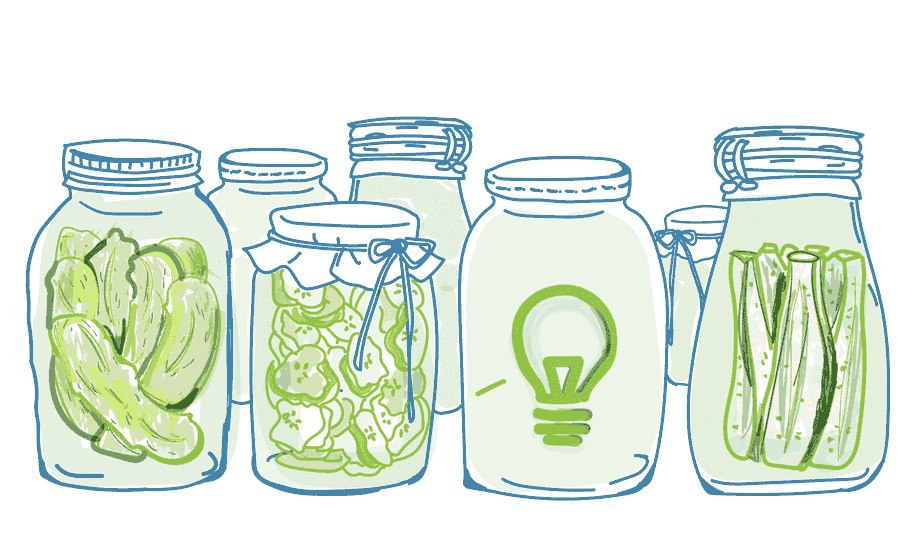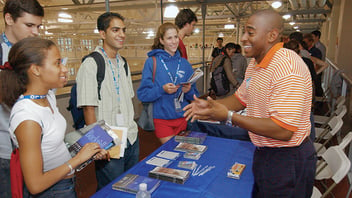
Don't want to miss a future Weekly Edventure? Since carrier pigeons and smoke signals haven't yet made a comeback, we’ll take advantage of more modern messaging to ensure it reaches your inbox.


Happy National Pickle Day! For this week’s Edventure, along with crunching down on dill potato chips, sauerkraut, and pickle-flavored candy canes (just kidding about that last food, we aren’t monsters!), we decided we wanted to explore the unique relationship between the culinary process of pickling and the creative process. First, we had to go back in time a bit to learn about its history — all the way back to 2400 B.C. to be exact.
Archeologists and anthropologists believe pickling was first practiced by the ancient Mesopotamians well over 5,000 years ago and it seems that the food has stuck around ever since. Cleopatra claimed that eating pickles was her best-kept secret for eternal beauty. Rumor has it that Julius Caesar actually ordered Roman soldiers to eat pickles, convinced that they had stamina and strength-building properties. Sea explorers pickled nearly all of their food in order to preserve months of food at a time. But by the 19th century, H.J. Heinz Company had cornered the pickle market and by 2020, Americans alone are projected to eat more than 250 million pickles a year.
Yes, pickles may be having a real moment in 2019, but it’s important to mention that the art of pickling has also been a staple of cultural cuisines in countries all over the world, stretching from dishes like kimchi in Korea, pickled herring in Sweden, and giardiniera in Italy.
Now, there is no scientific proof that pickles have serious physical and physiological powers, but we are certain that pickling food — vegetables, fruits, and even meats — can mean taking something on the verge of going bad to significantly prolonging its shelf life with new and interesting flavors.
And this is exactly what we want to edventure into this week. It might sound silly but we believe that pickling is a lot like creative idea generation.
Some of our best ideas come after stepping back from them: when we are willing to put them on a metaphorical shelf and allow them to change shape all on their own. It wouldn’t be pickling if the ingredients weren’t given the time to literally mull it over.
Next time you have a creative pursuit that feels like it’s not quite what you were hoping it would be, don’t just throw it in the trash. Give it a moment. Put it in your proverbial pickling jar and allow it to brine, letting the ingredients of time affect its texture, taste, and flavor. Sometimes this is all it takes to turn a mediocre idea worth scrapping into a creative concept worth pursuing. “Pickling” ideas might sound crazy, but like everything else at EXPLO, we encourage you to give it a try.

We wanted to recommend some articles, games, videos, and artwork that have inspired us to write this Thursday's Weekly Edventure on how “pickling” ideas can be good for creative conception:


Don't want to miss a future Weekly Edventure? Since carrier pigeons and smoke signals haven't yet made a comeback, we’ll take advantage of more modern messaging to ensure it reaches your inbox.
The combination of being more deliberate about what you want, more clear about what you intend,...


I entered college dead set on majoring in Economics. My family did business, and my SAT Math score...